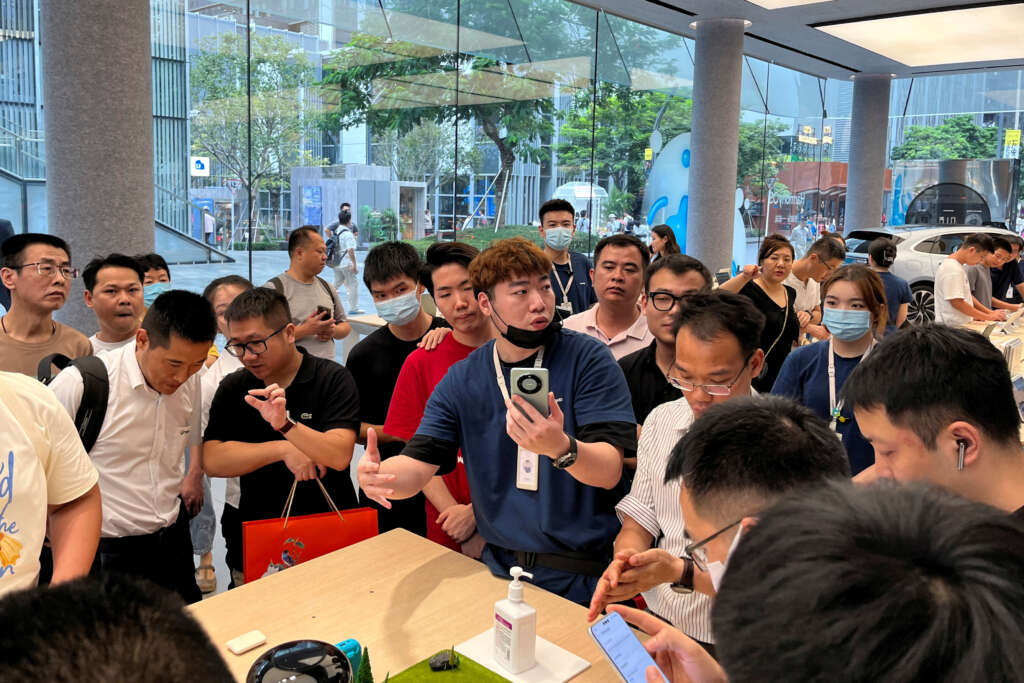
Why is Huawei’s new smartphone generating so much buzz?
SHENZHEN, China (Reuters) -The surprise launch of the latest high-end smartphone from Chinese tech giant Huawei Technologies has triggered an international guessing game over what is inside it.
The company, which has been heavily targeted by U.S. government restrictions, began selling its latest Mate 60 Pro for 6,999 yuan ($964) online on Tuesday, raising eyebrows over its decision not to do any prior advertising and prompting widespread speculation over whether it could be 5G capable.
Following is what we know and don’t know about the phone, and why it matters.
WHY DOES IT MATTER?
From 2019, the U.S. cut Huawei’s access to chipmaking tools essential for producing the most advanced handset models, with the company only able to sell limited batches of 5G models using stockpiled chips.
The U.S. and some European countries have called Huawei a security risk, which the company denies.
The restrictions devastated the business of a company that once competed with Apple and Samsung to be the world’s biggest handset maker, with its consumer business peaking at 483 billion yuan in 2020 before plunging almost by half a year later.
But Huawei has repeatedly said it is fighting back and research firms told Reuters in July they believed it was plotting a return to the 5G smartphone industry by the end of this year, using its own advances in semiconductor design tools along with chipmaking from China’s Semiconductor Manufacturing International Co (SMIC).
If Huawei and China were capable of producing their own 5G chips, it would mark a significant advancement in their capabilities and a blow to U.S. efforts to limit its progress.
IS THE MATE PRO 60 A 5G PHONE?
Huawei has kept mum, only saying that the smartphone is the “most powerful Mate model ever”.
Buyers of the phone have been posting tear-down videos and sharing speed tests on social media that suggest the Mate 60 Pro is capable of download speeds exceeding those of top line 5G phones, suggesting it is in a similar playing field.
The phone contains a new Kirin 9000s processor from Huawei’s HiSilicon chip division, which appears to use advanced technology from SMIC, according to Dan Hutcheson, an analyst with TechInsights.
If it uses 7+nm or 5nm processes, production would likely be a very expensive process, Hutcheson said.
WHAT HAS BEEN THE REACTION?
The release sent Chinese social media users and state media into a frenzy, while tear-down firms around the world have raced to get their hands on the phone to see what is inside.
An initial batch of the phone quickly sold out online. Huawei’s flagship store in the city of Shenzhen and its website say new stocks will only arrive at the earliest by mid-September.
The state-backed tabloid Global Times was triumphant, noting in one of several editorials that the phone had launched as U.S. Commerce Secretary Gina Raimondo was visiting, and calling it proof the U.S. had failed with its “extreme crackdown on China”.
State media did not cite any sources or evidence for their assertions.
Social media users were also jubilant, with Huawei searches trending for several days on the Weibo messaging platform and likening it to the mythological Monkey King escaping from under a mountain.
WHAT NEXT?
Several Huawei staff said the phone’s launch had taken them by surprise, with its official release initially scheduled for Sept. 12.
Nicole Peng, senior VP of Mobility at Canalys, has said it would be crucial for Huawei to provide clarification on its technology, given the high level of market interest.
($1 = 7.2628 Chinese yuan renminbi)
(Reporting by David Kirton in Shenzhen, Mo Yelin in Beijing and Max Cherney in San Francisco; editing by Robert Birsel)


